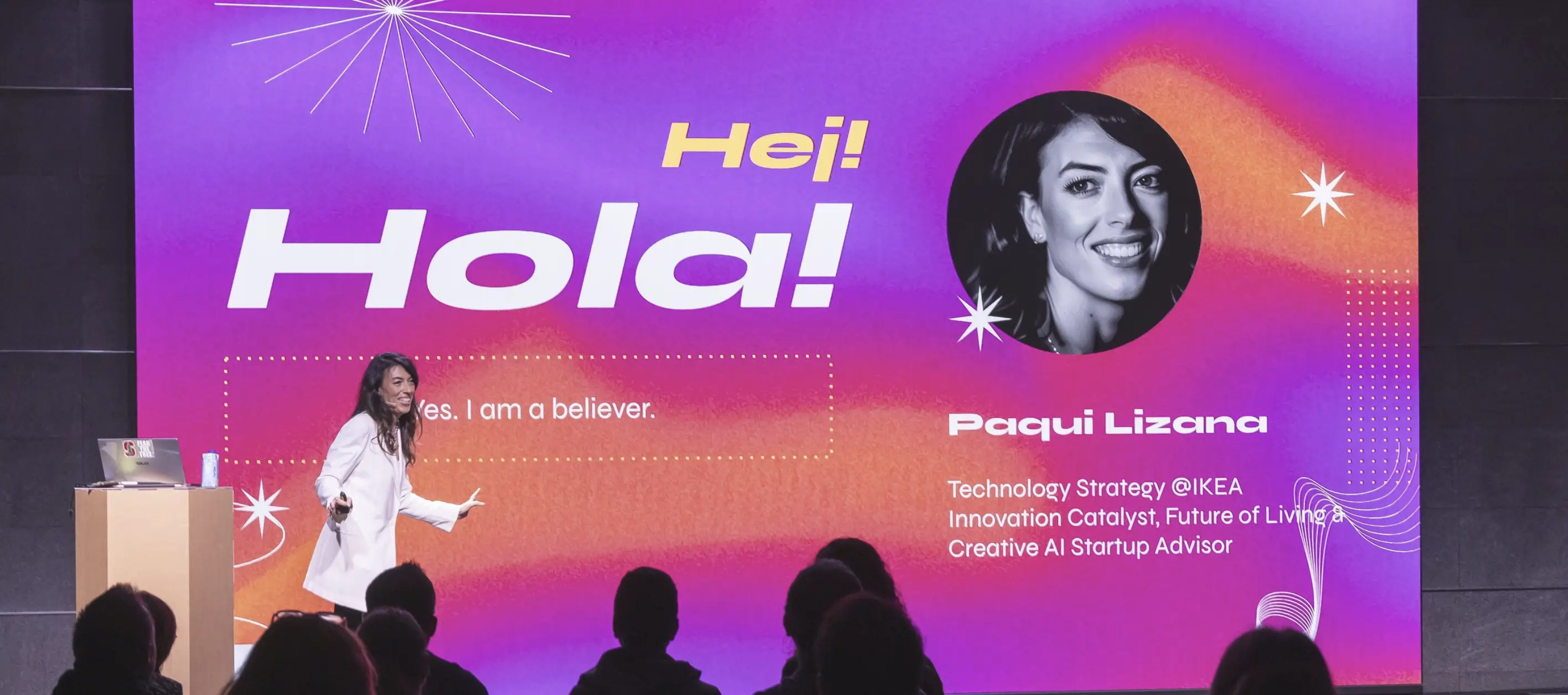How to Achieve Escape Velocity in Business


“We are living in incredible times where the only constant is change, and the rate of change is increasing.”—Peter Diamandis, Executive Founder and Director, Singularity University
Change is one of the few constants we all face throughout our personal and professional lives.
Regardless of your role or industry, your organization is bound to go through major transformations in the next few years. This is true whether you’re strategically driving transformation from within—or struggling to keep pace with fast-moving competitors who are forcing you to change.
So, why do many of us find it difficult to reimagine and reinvent our organizations for future success? A simple explanation is that organizations are made up of individuals, many of whom don’t enjoy change or risk-taking. This is especially true for organizations that are well-run and successful—the need for reinvention seems less urgent when your current scoreboard is showing nothing but wins.
And though you probably won’t hear people around your organization verbalizing their desire to preserve the status quo or remain within their comfort zones, you will witness people’s actions that signal their resistance to the new ideas, processes, and strategies that are necessary to create future-readiness.

Moonshot thinking for your enterprise
This inertia, or resistance to change, is inevitable, particularly in large companies. The larger the organization, the more difficult it is to reach the escape velocity necessary to move from a traditional business to an exponential enterprise. Planning a moonshot seems like an apt metaphor when thinking about the challenges of reinventing your organization.
If you’re a regular reader, you’re familiar with the concept of moonshot thinking. Astro Teller is the CEO of X, Alphabet's “moonshot factory for building magical, audacious ideas that through science and technology can be brought to reality.” Teller often talks about how aiming for 10% improvement puts you in direct competition with everyone else in the world—and the odds of survival are not in your favor.
Instead, Teller proposes what he calls moonshot thinking that is focused on 10x improvements and outcomes. The concept is that planning for 10x improvement forces your organization to define and approach problems in a radically different way.
A good example of incremental vs. exponential thinking comes from Charles Martin, an AI scientist and consultant. Martin uses Uber as an example. What if Uber had developed its app and simply decided to license it or sell it to Yellow Cab company to help streamline the logistics of running a taxi service? Instead, Uber founders chose to completely bypass the traditional taxi industry and built a multi-billion-dollar global transportation network that includes ride-hailing, ridesharing, food delivery, and more—a moonshot that reshaped an entire global industry in a few short years. A few things to keep in mind regarding enterprise moonshots:
You must solve multiple problems at once
You may have learned in school that escape velocity depends on the mass of the planet from which you’re escaping. A rocket leaving Earth needs to be traveling about 25,000 miles per hour to escape our atmosphere. At the same time humans were figuring out how to achieve escape velocity, we were also working on solving the logistics of the lunar landing and the critical timing of the return trip to Earth. Organizations that plan and execute successful moonshots are highly skilled at anticipating problems, brainstorming solutions, and solving multiple problems simultaneously.
Larger organizations require more velocity
The gravitational pull—or resistance to change—in large, complex organizations takes more effort to overcome than in smaller organizations. In terms of planning, when you’re building your organization’s innovation engine, I recommend building an engine with 150% more capacity than you think you'll need to reach escape velocity. It’s always better to build extra capacity in advance than to find out you need additional resources after takeoff.
Build a plan to maintain momentum
Today’s giant steps in AI and the Internet of Things (IoT) would be impossible without the foundation of the internet, cloud computing, and mobile devices. This generation’s game-changing technologies are able to move very quickly by taking advantage of the previous generation of exponentials. We have seen many organizations that were able to blast off on a reinvention journey with a strong commitment and promising velocity—only to fall back to Earth. These organizations didn’t plan for sufficient capacity to accelerate and continue accelerating—an absolute requirement for maintaining momentum in the future. In other cases, executive sponsors eager for results pulled the plug too soon on fledgling innovation programs. We live in exponential times, and each generation of technologies is built upon the previous generation’s output.

Find your frameworks
Although every organization has the same access to exponential technologies, some will resist using them to reinvent their businesses. Other organizations might begin adopting exponential tech and achieve modest gains before losing momentum and falling back to Earth.
We have seen that fewer organizations will build enough velocity to escape from traditional business models and ways of thinking to develop game-changing innovations and breakthrough products. What’s the difference? Enterprises often fall short because they lack the mindset and culture required to reinvent their businesses, and the frameworks to ensure they can achieve and sustain the velocity required to continue accelerating into the future.
Develop a 10x strategy
In our moonshot metaphor, I would add that there’s an important distinction between speed—how fast an object is moving—and velocity, which includes both speed and direction. We help organizations develop future-growth strategies to ensure they stay pointed in the right direction through the vagaries of an uncertain future. Effective strategy formation involves mapping a clear vision and direction and sharing it with the entire organization, including partners and stakeholders.
Your narrative tells the story of how you plan to reach the future successfully. What happens if I tell you that we’re going to the moon, but I haven't shared an action plan, what steps are involved, or what roles people are expected to play? A different story, and one that’s unlikely to have a happy ending.
Without a sound strategy that’s communicated clearly, even an organization that manages to achieve liftoff will feel resistance from those who don’t understand or agree with the strategy. A successful mission of reinvention can't be completed in an atmosphere of uncertainty and fear.
Strive for 10x innovation
Even the world’s greatest strategy means little without timely implementation—the most innovative products or services won’t help your organization if they are launched a year too late. But even for organizations that have clear visions and 10x growth goals, the way to achieve those goals often remains a mystery.
But despite the need for speed, it’s important to develop and utilize frameworks that will help drive your organization’s future growth. It’s been said that incomplete problem definitions will lead to incomplete solutions, so we spend a lot of time making sure we’re asking the right questions to define significant problems and surface the most promising solutions.
Then we focus on the actual building and prototyping of solutions. This rapid prototyping enables teams to learn how to cycle quickly through building, testing, iterating, and improvement stages. Finally, the go-to-market sprint is what we refer to as the leap, because it is the point where you jump from an idea—backed by a prototype, testing, and data—to actual business implementation.
Cultivate 10x leadership
How is leadership different in the incremental and exponential worlds? To achieve 10x outcomes in accelerated environments, today’s leaders must not only anticipate and react to the waves of change but also drive organizational change as well. And future leaders must not only navigate this rapid pace of change but also BE the change. In this scenario, they’re playing a dual role—not only creating the wave of change, but also surfing atop the wave, taking advantage of its momentum. Just as the best way to predict the future is to invent it, the best way to sustain momentum is to create waves of change.
Preparing to lead in a future of constant, accelerating change requires us to reconnect deeply with the most elemental aspects of being alive. But tapping into our human potential and learning from the world around us isn’t sufficient. When we talk about different possible futures, we are talking about exponentially different futures. Harnessing the ancient wisdom of the world around us (and within us) while also unleashing the exponential power of technology will be key attributes of a successful leader in 2040.

“It is the policy of this company never to be satisfied with what we have and always to anticipate the demands of the future.” Thomas Watson Sr, who led IBM’s exponential growth from 1914 to 1956
Reinventing the enterprise
Although we can expect change to be more difficult to achieve in larger and more established organizations, it’s by no means impossible. The organizations below managed to overcome various degrees of inertia, and I would wager that they learned to build in at least 150% more capacity—in planning, budget, and other resources —than they originally thought necessary to execute a successful reinvention.
IBM went from king of the PC world in the 80s to a reported $8 billion loss in 1993. After some recent ups and downs, IBM once again has achieved a $125 billion market cap on the strength of its cognitive (AI & related technologies) and analytics practices. Since IBM’s founding in 1914, it’s realistic to assume the company has overcome inertia and resistance to change several times in its history.
UPS has enjoyed unprecedented growth after reinventing itself in 2010, going from a delivery service to a global leader in logistics. In terms of capacity planning for reinvention, UPS invests more than $1 billion annually in technology, and the company is known for its operational expertise applying in analytics and machine learning.
Netflix has grown exponentially, from a $500 million DVD rental service to a $163-billion entertainment empire in a decade. Netflix uses machine learning and data science to personalize movie recommendations and improve streaming quality.
Enterprise reinvention isn’t for the faint of heart, but there are many case studies such as these that prove it can be done. It can be done more successfully using frameworks to integrate strategy, innovation, and leadership components with your organization’s unique culture. Yes, transformation is a challenge that will stress-test your organization. But in the end, transformation is much less stressful than being on the wrong end of disruption. r


